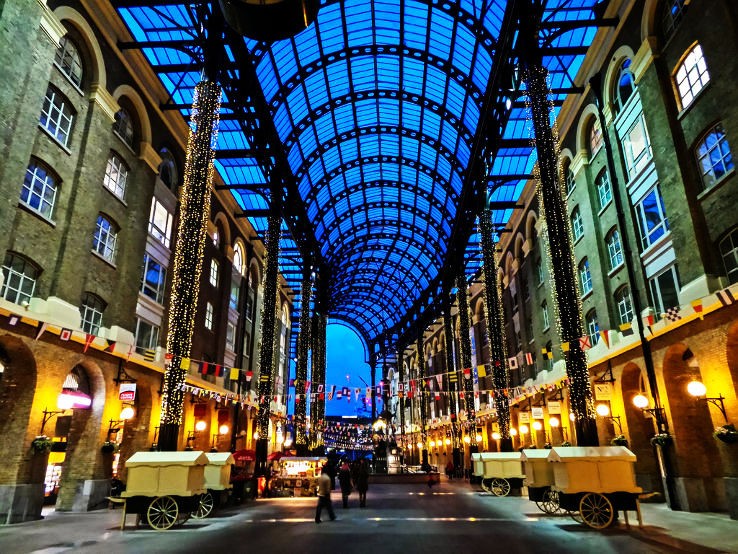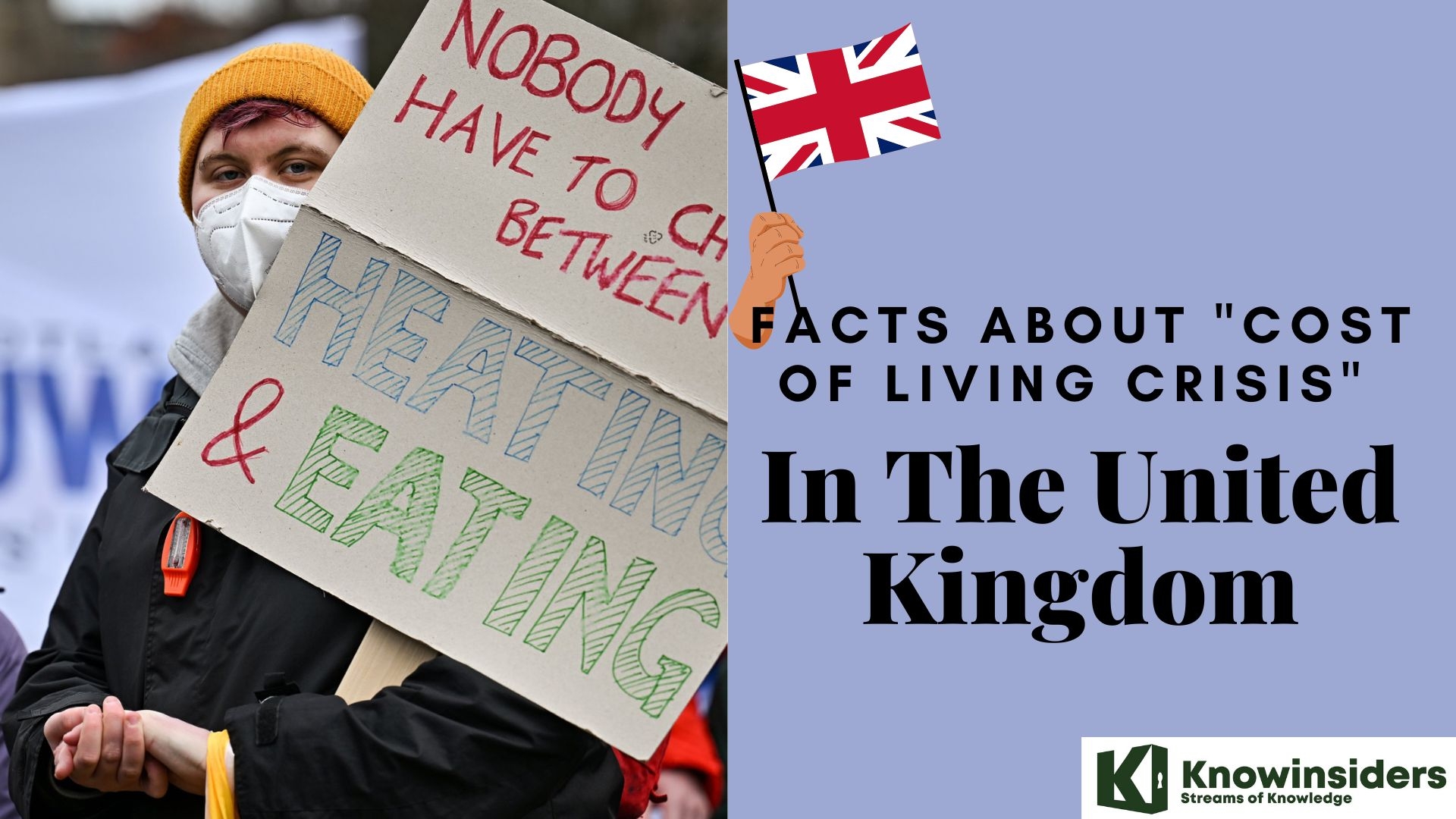What Is The Capital of U.K: History, Best Places to See and Facts
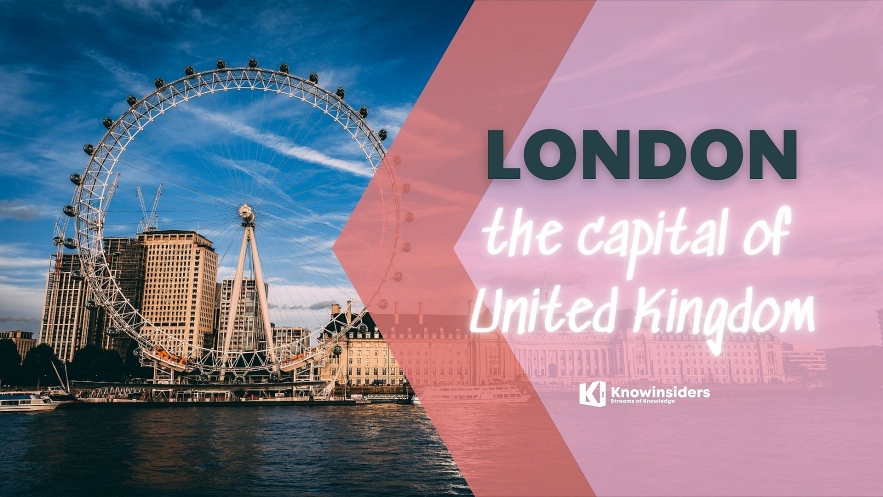 |
| London - The Capital Of United Kingdom: Knowinsiders. |
What is the Capital of United Kingdom?
The capital of United Kingdom is London, which was founded 50 AD. London has been the capital since 1801. London is the largest city in United Kingdom and functions as: Houses the Palace of Westminster. London is located at 51.5074° N, 0.1278° W, at an elevation of 26'.
How much do you know about London? Let’s start with the basics, including history, best places to go and frequently asked questions and facts about the capital of the United Kingdom.
*****
History of London
London is situated on the banks of the River Thames. It is the seat of the Government of the United Kingdom and the country’s financial centre. The city has used its privileged location in southeastern England to its advantage, having always been a densely populated and wealthy area.
According to London City Break, the city of London was founded by the Romans and their rule extended from 43 AD to the fifth century AD, when the Empire fell. During the third century, Londinium, the name given to the town by the Romans, had a population of 50,000, mainly due to the influence of its major port.
As a consequence of repeated Anglo-Saxon invasions during the fifth century, Londinium declined and during the eighth century it became the capital of the Kingdom of Essex.
During the ninth century, the town suffered numerous Viking attacks. As a consequence, Danish settlers established themselves in the area, encouraging trade and opening businesses in the town, transforming it into the first urban centre of England. The town’s wealth and power attracted the Danish Great Heathen Army, which besieged the city until it was captured by King Alfred the Great in 886.
In 1067, following the Norman invasion and conquering of England, the city's existing rights, laws and privileges were established by the newly crowned King of England, William Duke of Normandy. The Tower of London was built during William's reign.
In 1199, King John reinforced the city's self-government, and in 1215 the city could elect a different mayor every year.
For many years, England had no capital city. However, the institutions of central government were moved to Westminster, close to London. This and the rise of trade in the area were two decisive factors in London's emergence as the capital of England.
| Go back to United Kingdom 2022 Population: 9,540,576 2022 Growth Rate: 1.22% Founded: 50 AD Capital as of: 1801 Elevation: 26' Role in Country: Houses the Palace of Westminster |
As the power of the Tudor and the Stuart dynasties grew, London expanded in size and importance. By the time Henry VIII was king, the population of London was at least 100,000.
Tensions between Protestants and Catholics, however, darkened the otherwise prosperous reign of Henry’s daughter, Elizabeth I. In 1605, Catholic sympathizer Guy Fawkes tried—and failed—to blow up the entire British House of Parliament in the infamous Gunpowder Plot.
As History.com reported, real disaster struck in 1665, when London was hit by the Great Plague, which killed about 100,000 people. One year later, the city, which had swollen to about a half-million in population, mostly housed in wooden structures, was again reduced to ashes in the Great Fire of London. In the wake of that inferno, many notable buildings were constructed, including Buckingham Palace and St. Paul’s Cathedral.
The Bank of England was founded in 1694 and was first governed by Huguenot John Houblon, who helped turn London into an international financial powerhouse. By 1840, the city had swollen to 2 million people, often crowded into unsanitary hovels, which helped create epidemics of cholera and other diseases.
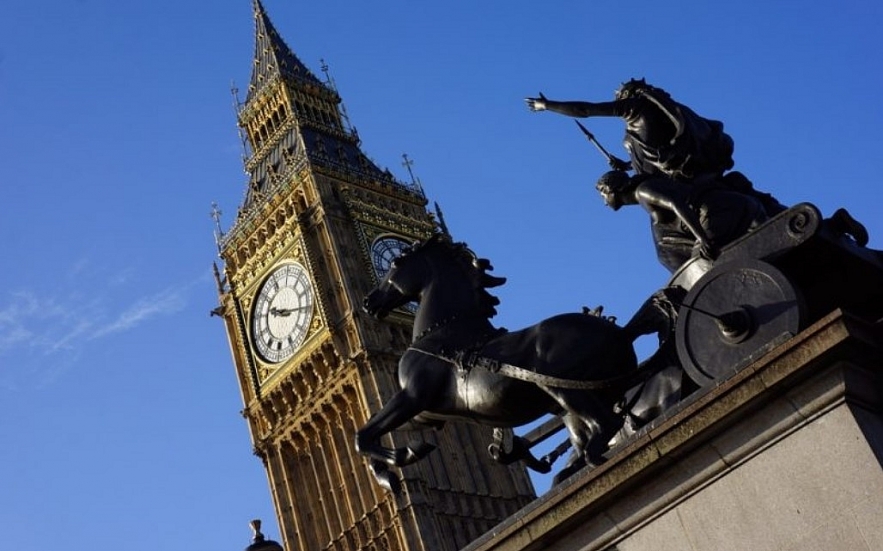 |
| London - The Capital Of United Kingdom. Photo: londontopia.net. |
During the reign of Queen Victoria, London was well established as the prestigious seat of the vast British Empire, and while Big Ben rose above the city in 1859, the London Underground opened in 1863 as the world’s first subterranean railway. But in the shadows of the great metropolis, Jack the Ripper stalked the city’s women in 1888, killing at least five in one of history’s most notorious murder sprees.
Air raids caused about 2,300 casualties in London in World War I, and during the Battle of Britain in World War II, the city was bombed relentlessly by the German Luftwaffe—the London Blitz eventually killed about 30,000 residents.
During the Great Smog of 1952, Londoners endured immeasurable suffering and thousands died during and after the pollution event. More recently, a terrorist attack on the London transit system killed 56 people in 2005. But the city has continued to grow and prosper, hosting the 2012 Olympics, while establishing itself as the preeminent cultural and financial center of Europe.
| London is the capital city of England and the United Kingdom, the largest metropolitan area in the United Kingdom, and the largest urban zone in the European Union by most measures. Located on the River Thames, London has been a major settlement for two millennia, its history going back to its founding by the Romans, who named it Londinium. |
Best Places to See in London
A trip to the capital wouldn't be complete without seeing the following attractions:
The Tower of London
Her Majesty's Royal Palace and Fortress, more commonly known as the Tower of London, is a historic castle on the north bank of the River Thames in central London, England. It lies within the London Borough of Tower Hamlets, separated from the eastern edge of the City of London by the open space known as Tower Hill. It was founded towards the end of 1066 as part of the Norman Conquest of England.
The Tower of London has played a prominent role in English history, as Visit London reported. It was besieged several times and controlling it has been important to controlling the country.
Despite the Tower of London's grim reputation as a place of torture and death, within these walls you will also discover the history of a royal palace, an armoury and a powerful fortress. Don't miss Royal Beasts and learn about the wild and wonderous animals that have inhabited the Tower, making it the first London Zoo.
Discover the priceless Crown Jewels, join an iconic Beefeater on a tour and hear their bloody tales, stand where famous heads have rolled, learn the legend of the Tower's ravens, storm the battlements, get to grips with swords and armour, and much more!
Buckingham Palace
A chance to see world-famous art, glimpse regal opulence and get inside HRH’s headquarters. Tourist and locals alike know the façade of Buckingham Palace, which stands at the end of The Mall. But it was only in 1913 that this addition was made, by King George V and Queen Mary. Before that, in 1633, the palace wasn’t even royal – it belonged to Lord Goring, who was forced to hand over ownership to the Royal Family (under King George III) due to a flaw in his contract. Poor chap.
Why go? To snoop around the most famous royal residence in the world.
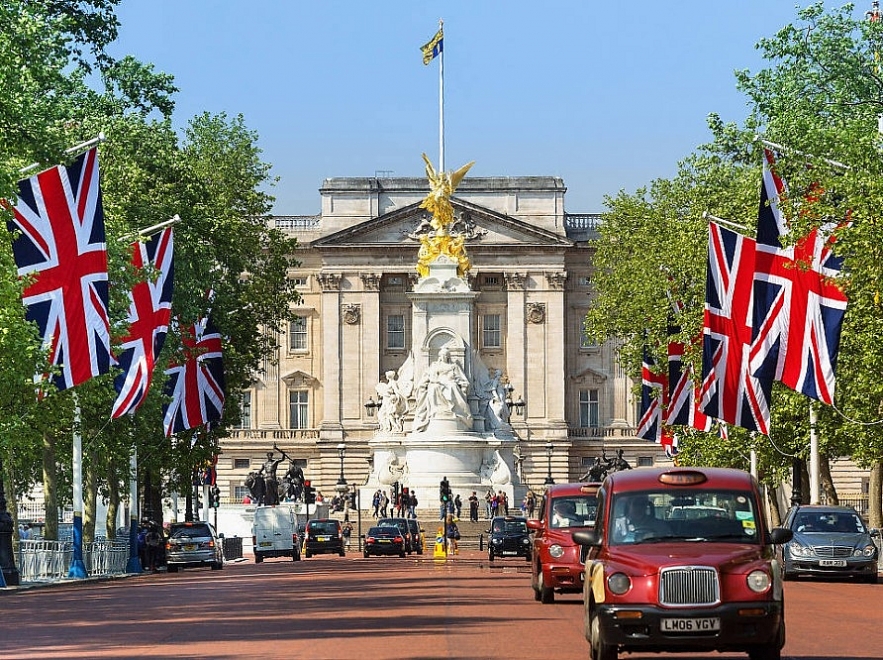 |
| London - The Capital Of United Kingdom. Photo: timeout.com. |
The Historic Settlement of Greenwich
Home of the Royal Observatory, Greenwich is a famous tourist destination because Greenwich Mean Time (GMT) is a term originally referring to mean solar time at the Royal Observatory in Greenwich.
As the United Kingdom grew into an advanced maritime nation, British mariners kept at least one chronometer on GMT in order to calculate their longitude from the Greenwich meridian, which was by convention considered to have longitude zero degrees. Most time zones were based upon this reference as a number of hours and half-hours "ahead of GMT" or "behind GMT".
Houses of Parliament
The seat of British democracy as Time Out reported. Take an audio tour through the House of Lords and House of Commons to bring the building to life. It takes around 90 minutes and features leading parliamentary figures such as Mr Speaker and Black Rod. Feeling fancy? Choose the tour that comes with afternoon tea beside the Thames.
Why go?For a dazzling combo of history, politics and architecture.
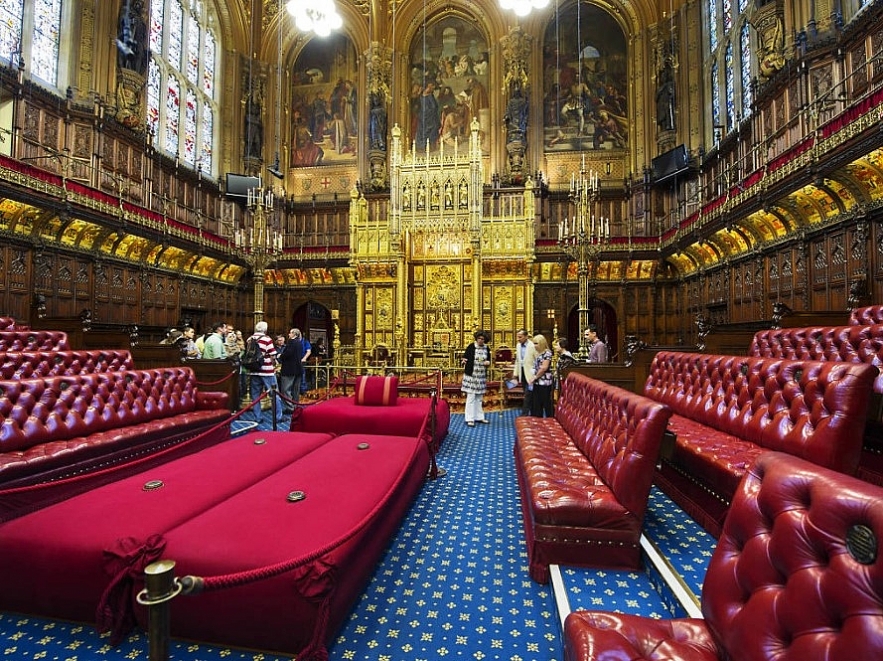 |
| Photo: timeout.com. |
Big Ben – A Legendary Monument
The first thing that comes to your mind when you think about London is The Big Ben and it truly is a legendary monument. This 97-meter tower housing a giant clock is known throughout the world as the time signal of BBC radio. It is one of the greatest places to be in the world and let’s just leave it to that. This is amongst the best places in London.
Timings: Monday and Friday from 9:15 am to 4:30 pm Tuesday, Wednesday and Thursday from 1:15 pm to 4:30 pm
Address: Westminster, London SW1A 0AA, UK
Entry Fees: £15
Famous For: Legendary monument
Kew Gardens
The Royal Botanic Gardens, Kew, usually referred to as Kew Gardens, comprises 121 hectares of gardens and botanical glasshouses between Richmond and Kew in southwest London, England.
Kew Gardens, London's largest UNESCO World Heritage Site, is the perfect escape from the hustle and bustle of the city. Home to the world's most diverse collection of living plants and a scientific research centre of international renown, it's the perfect day out.
Discover beautiful glasshouses including the iconic Palm House and its exotic rainforest; the Princess of Wales Conservatory which invites you to explore 10 of the world's climatic zones; and the Waterlily House with its amazing, giant lily pads.
The institition of Kew Gardens is a non-departmental public body sponsored by the Department for Environment, Food and Rural Affairs. It is an internationally important botanical research and education institution with 700 staff and an income of £56 million for the year ended 31 March 2008, as well as a visitor attraction receiving almost two million visits in that year. Created in 1759, the gardens celebrated their 250th anniversary in 2009.
London Eye
The London Eye is located on the south bank of the river Thames. The nearest station is Waterloo, but Charing Cross, Westminster and Embankment are also a short walk away. Several bus routes stop near the London Eye.
Enjoy amazing 360-degree views over London from the London Eye, a rotating observation wheel which is 135 metres (443 ft) high. Spot some of the capital's most iconic landmarks and top attractions, including Big Ben, the Houses of Parliament and Buckingham Palace.
Within each capsule, interactive guides allow you to explore the capital's iconic landmarks in several languages, as Visit London reported.
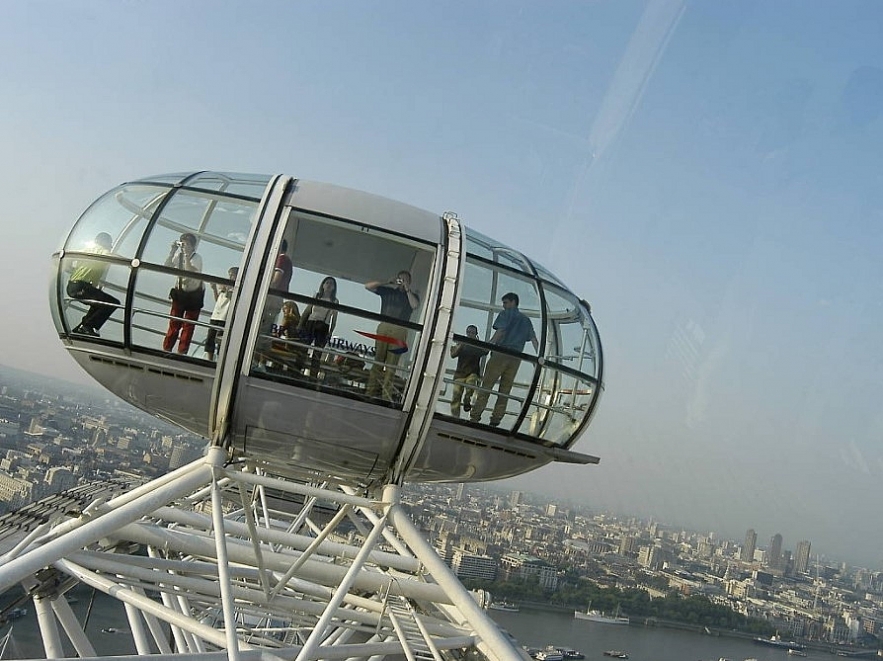 |
| Photo: Andrew Brackenbury / Time Out. |
| How long does it take to go round the London Eye? The gradual rotation in one of the 32 high-tech glass capsules takes approximately 30 minutes and gives you an ever-changing perspective of London. You can skip most of the queues with a fast-track entry ticket. |
Wembley Stadium
Hosting the nation’s biggest sporting spectacles since 1923, Wembley has plenty of heritage to inspire any visitor, but as the home of England’s World Cup Final win over West Germany in 1966, its legendary status as a temple to sport has been assured forever more.
The old twin towers have long gone, and even though the original Wembley Stadium used to host matches watched by crowds of 127,000 (these days it’s a more modest but still thronging 90,000), those two old peaks would be dwarfed by today’s arena, completely rebuilt and opened in 2007. The iconic arch that spans the width of the stadium can be seen from as far away as Richmond Park.
As part of the project, over £70 million was spent on improving access by train, tube, bus and by foot. In fact, the stadium’s website even has a ‘Sofa to seat’ feature so you can plan the best travel route all the way from your living room to the row your ticket is in.
Even if you’re not coming to see a sports event or a big concert, you can take a Wembley Tour, which revisits the stadium’s golden moments from the 1920s to the present. Open throughout the year (but closed when there are major events taking place), the 75-minute tour is hosted by knowledgeable and impressively enthusiastic guides, who allow you to pause and soak up the stadium magic, take a few selfies and imagine yourself caught up in cup final fever.
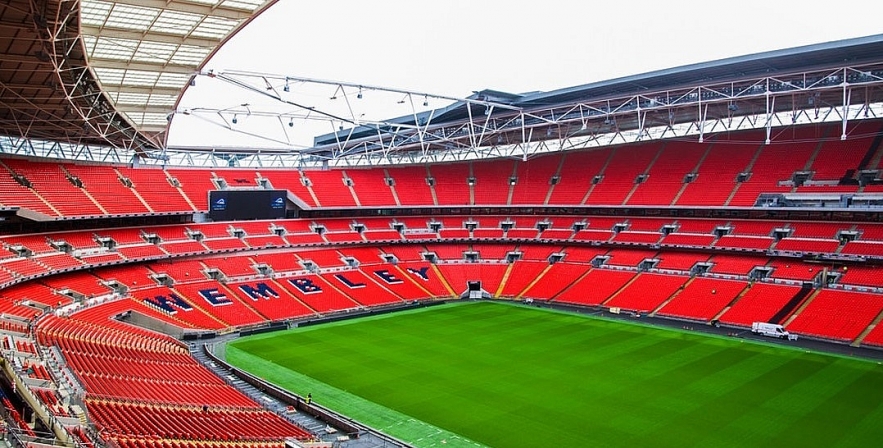 |
| Photo: keraflo.co.uk. |
Interesting Facts about London
From the houses of parliament to the London underground, here are some of the most interesting facts about London, according to uk.urbanest.com, londonxlondon and londondreaming.com.
Over 300 languages are spoken in London
First on our list of facts about London is the cultural diversity. As one of the most diverse cities in the world, London houses over 8 million residents, who collectively speak over 300 languages, including Bengali, Gujarati, Punjabi, Cantonese, Mandarin, Hokkien and of course English.
The Heart of the City is only 1 Square Mile
You know how they refer to The City – the original heart of London as the Square Mile?
Well, they’re really not joking. Although London is home to a population of over 8 million people and 3,236 square miles, the City – the original heart of London is contained to an area of one square mile.
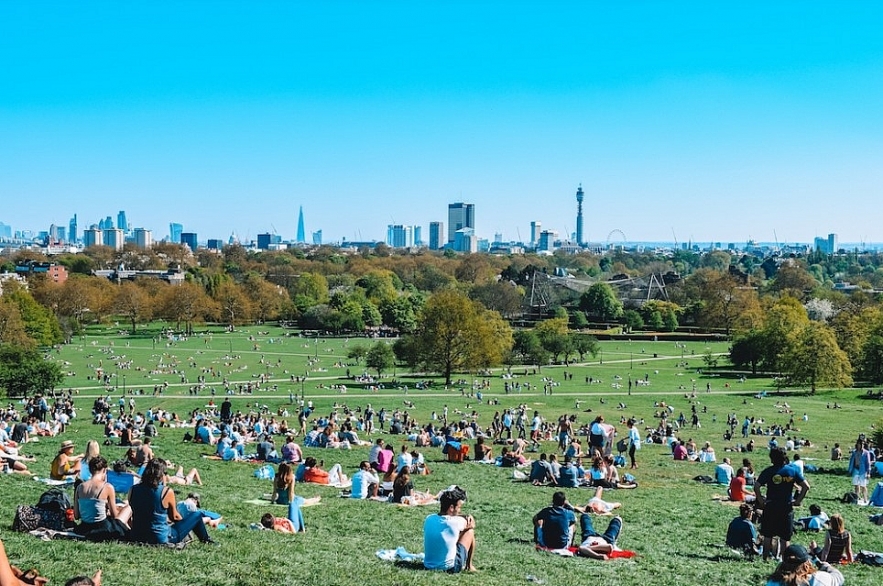 |
| Enjoying the view over Regents Park and the London skyline from Primrose Hill. Photo: londondreaming.com. |
Big Ben is not actually called Big Ben
Big Ben is arguably London’s most famous landmark. Surprisingly, it is actually meant to go by the name ‘The Clock Tower’, while ‘Big Ben’ is the name of the bell. Feel free to bore your friends and family with that fact if you ever do a tour of London.
The Great Plague killed a third of Europe’s population
The Great Plague killed roughly 25 million people, which was around a third of the entire population of Europe in the 15th Century. This particularly affected London because of the narrow streets and lack of sanitation. During this time, men known as Searchers shouted out ‘Bring out your dead’ all through the summer of 1665. They carted away dead bodies and threw them in mass burial pits. Some of which Londoners are still discovering to this day.
Banks in the City of London Used to Have to Be Located within a 10 Minute Walk of the Bank of England
This rule was actually revoked in 1980 but until that date, all banks operating in the City had to be within a 10 minute stroll of the Bank of England. This was so the Governor of the Bank of England could call an emergency meeting and have everyone in attendance within half an hour.
The Tower of London houses six ravens
Charles II’s ordered for six ravens to be placed in the Tower of London to protect it. Apparently, six ravens are still kept in the tower today and they must remain there at all times due to superstitious reasons. For extra measures, each raven has a wing clipped, they even have a spare raven handy in case one flies away.
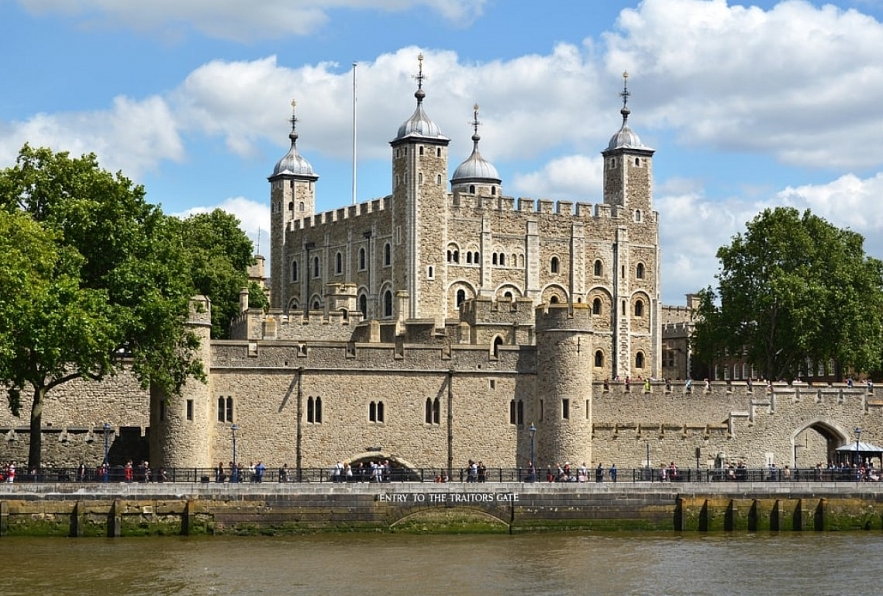 |
| Photo: uk.urbanest.com. |
London University was the first to allow women to study
University used to be only for men, and London University was the first to allow women to enrol.
More than Half of the Underground Runs Overground
In the early days of the underground, lines needed to be near the surface to allow steam trains to vent the built-up steam when they emerged into the open air.
Little did they imagine how grateful we’d be for the snatched opportunities for phone signal when the train pops up into the open air.
There was a beer flood in London
In 1814 there was an accident at Meux & Co’s Horse Shoe Brewery, where a 22-foot tall wooden vat of fermenting porter burst. This lead to what is now known as the London Beer Flood.
Between 580,000 and 1,470,000 litres of beer were released in the streets of London, causing eight deaths.
The Millennium Dome is the biggest structure of its kind in the world
The Millennium Dome is so big that it can fit the Great Pyramids of Giza comfortably under the roof! The structure is 365m in diameter; and 52m high in the middle; with 12 supporting poles, symbolising days, weeks and months of the year.
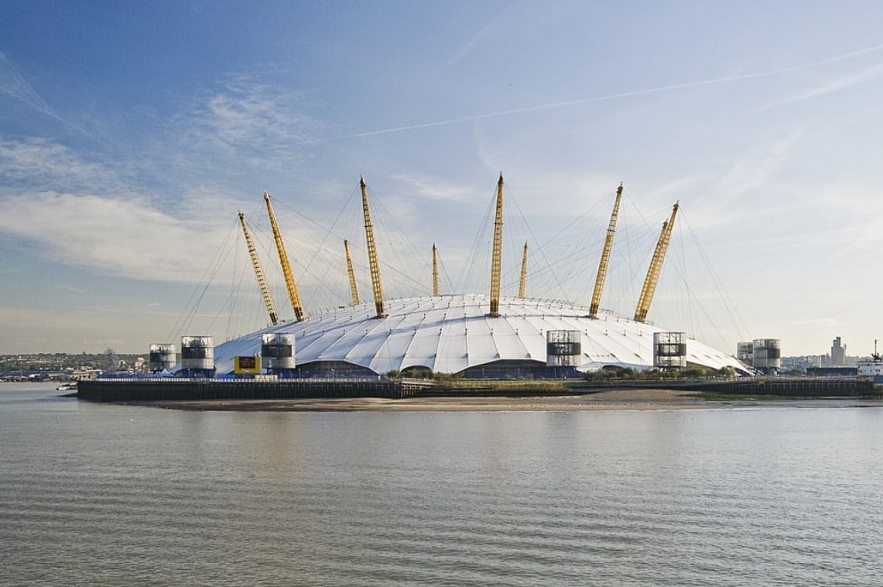 |
| Photo: uk.urbanest.com. |
Feeding pigeons in Trafalgar Square is banned
Trafalgar Square was once renowned for housing thousands of feral pigeons, which tourists often fed or posed with. In 2003, London Mayor Ken Livingstone banned feeding them or selling feed near the square. They even went as far as using a hawk to keep them at bay, which evidently turned out to be successful.
Twice as Many People Visit London Every Year as Actually Live Here
That’s 19 million to the resident population of 8.97 million. That explains why every train seat is taken up by a suitcase then (people, please stop doing this unless you’ve bought your suitcase a train ticket too).
| Frequently Asked Questions about London Does it really rain all the time? No! Contrary to popular belief, London is actually relatively dry. And indeed, Britain overall has a temperate climate, but is prone to quick changes – thus the need to always be prepared with a brolly (umbrella) should there be a cloud burst. How can I do London on a budget? This is more possible than you’d think! Many of the world’s greatest museums and art galleries are in London – and amazingly many have free entry. There are all sorts of ways to see the other sights with special offers and discounts, and what’s great about Britain is you know you’re going to get a good value, memorable experience for your money. You can easily walk between many of the main sights of central London, saving on transport too. Invest in a Visitor Oyster Card if you do plan to hop on and off the Tube and buses. What do I do if I get lost? You can always ask a local for advice – we really are surprisingly friendly when spoken to..! And in most central areas you’re likely to see a friendly British bobby (police officer), staff in Tube stations, bus drivers and taxi drivers are all super knowledgeable about their city. Official Tourist Information Centres and Travel Information kiosks are located all over London. What can I do at night in London? You can enjoy happy hours at the bar or visit the Sky Garden or attend a free comedy club night. It’s your call to make. What should I pack to wear? Anything goes in London! According to visitbritain, the mostly mild but changeable climate means it would be sensible to pack layers, a lightweight rain jacket and umbrella for rain showers. Warm coats and jumpers for winter. And, shock of shocks, you will need sun protection in summer as the sun does make 1 or 2 appearances! I'm travelling with kids to London. What should we do? London is a very family-friendly city with plenty of activities to keep the kids entertained all year round, and for all budgets. From action-packed experiences to immersive attractions and top London shows, check out our suggestions for fun things to do in London for families and kids of all ages. |
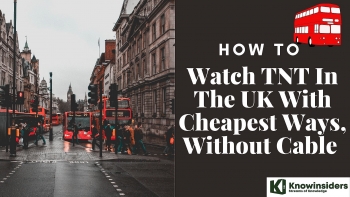 How To Watch TNT In The UK With Cheapest Ways, Without Cable How To Watch TNT In The UK With Cheapest Ways, Without Cable TNT is one of the most famous American channels, but it can be tricky to watch it outside of the US. In the article below, ... |
 Top Best & Biggest Movies Upcoming Releases for U.K Cinemas in 2022/2023 Top Best & Biggest Movies Upcoming Releases for U.K Cinemas in 2022/2023 Find out the best and biggest movies are coming out in the U.K in March, April, May, June, July, August, September, October, November, December of ... |
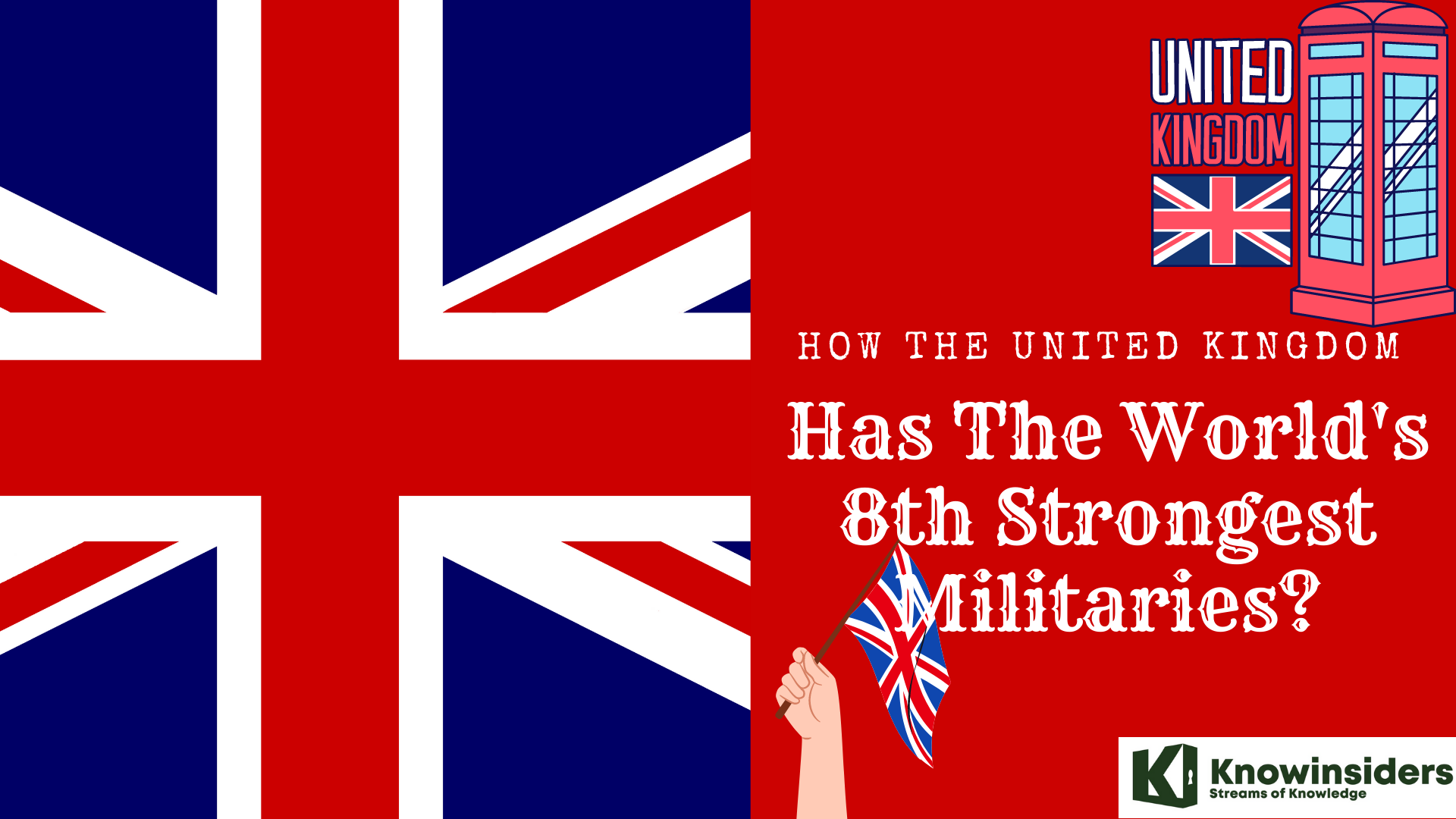 How Strong Is The British Army - 8th Strongest Militaries In The World How Strong Is The British Army - 8th Strongest Militaries In The World United Kingdom is ranked 8 of 140 out of the countries considered for the annual Global Firepower Index (GFP) review. How UK Has The 8th ... |

